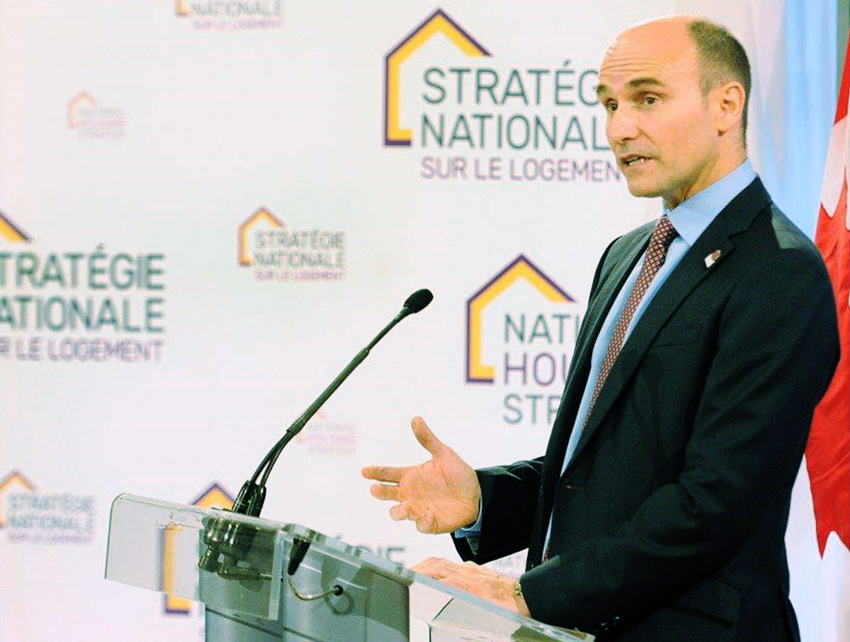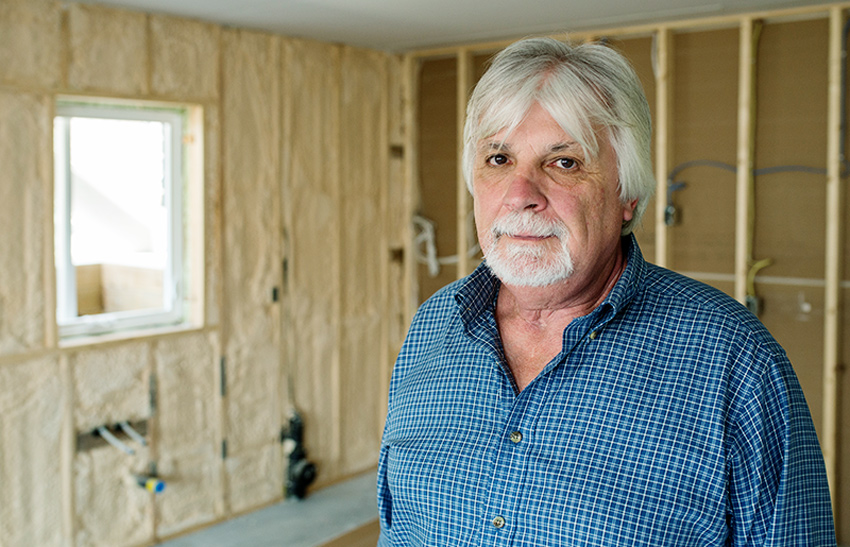Blog
Building Inclusive Housing

By John Guido
Katherine Black is a woman with a plan, a “plan for living independently.” On My Own? tells the story of this spunky woman who lives in L’Arche Hobart in Australia. This short film (part of the L’Arche International As I Am film series) is in turn hilarious and touching, informative and entertaining. It’s hard not to root for Katherine, a woman with an intellectual disability, determined to do whatever it takes “to be as free as a bird” – to live on her own, yet remain connected to the people who know and love her, the people “you depend on for independence.”
This film by Michael McDonald and Amber Herkey is a helpful addition to the conversation about a person’s home as not only a place to live, but also a path to increased choice, independence, and inclusion. Like Australia, there has been a shift in Canada away from the group home model towards individualized approaches that give persons with intellectual disabilities more control over where they live and with whom, and what supports they need to thrive. Yet as we see in “The Loneliness Statistic” (with data from the Australia Bureau of Statistics), the move to independence without supports for belonging and inclusion leaves many people lonely and isolated.
The Challenges of Systemic Change
Way back in 2006, Housing for Adults with Intellectual Disabilities, a paper written for Canada Mortgage and Housing Corporation (CMHC), named the gap between the housing people need and the housing that is available. The issue was not just finding the right places to live, but also finding the right supports. They wrote, “Adults, including those with intellectual disabilities, usually want to live independently. They want to make their own decisions on whom to live with, where to live, and what to do with their time. People with intellectual disabilities face extra challenges in working towards that goal, however…” These challenges include limited financial resources, limited support services, an inflexible service system, and fears and questions about safety.

Jean-Yves Duclos, Minister of Families, Children and Social Development, announces Canada's national housing strategy.
In 2018, the Canadian government recognized this challenge of appropriate housing for all persons with disabilities in Canada’s National Housing Strategy – A Place to Call Home. “People with disabilities face unique challenges in accessing affordable and appropriate housing. Inadequate social supports, insufficient financial assistance and inaccessibility of housing units all contribute to the difficulties they may face in their quest to live independently. People with disabilities are more than twice as likely to live on low incomes as those without a disability…”
Developing Inclusive Housing
The 2006 CMHC paper named best practices for housing for persons with intellectual disabilities: flexibility and choice, individualized funding, and person-centred approaches. And it named housing models that it could recommend as best practices including independent living, co-ops and other forms of co-housing, and (for those with the means) home ownership or adaption of a family home. These remain among the key options being explored today.
A report by the Community Living BC and Inclusion BC Inclusive Housing Task Force, “Home is where our story begins,” lays out a plan to increase what it calls “inclusive” housing. “Inclusive Housing means that people live in homes where they feel they are a part of their communities. They participate and have relationships with people in their community and have opportunities to make contributions and receive recognition. Inclusive housing should provide people with a sense of home and belonging within their community and promote quality of life. Inclusive housing includes the following five elements: Choice and control, Accessibility, Ratio of people with and without disabilities, Diversity, and Sustainability.”
The Canadian Association for Community Living and People First of Canada are leading a national initiative to develop housing options. “My Home My Community (MHMC) has launched three surveys to get a better idea of what it takes to give people with developmental disabilities more choice in the kind of housing they live in. Together, we are confronting the path of dependence and barriers to access that have left people with intellectual disabilities outside of affordable housing markets and community access for generations.”
L’Arche has much to learn – and much to contribute
Over the past decade, L’Arche Ontario and L’Arche Canada have been in dialogue with Greg Bechard whose work with the Elmira Developmental Support Corporation was named in the National Housing Strategy as an example of an innovative model of independent yet supported housing for persons with intellectual disabilities. Greg speaks of creating “intentional community” by welcoming Good Neighbours to be part of the housing they have built and the community they are creating. We will write more on this important project and the concept of intentional community as a way to create inclusive housing.

The Vanier Suites illustrate the direction of the L’Arche Canada Growth Initiative. This project and others in various stages of development are bringing the Mission of L’Arche to life in new ways, “responding to the changing needs of our members (current and potential) while being faithful to the core values of our founding story.” This means learning from the experience of those in L’Arche communities (e.g. Arnprior and Stratford) who provide Supported Independent Living. And learning from the Elmira folks and others developing new forms of housing and the business models necessary to develop them. It also means discerning what is essential about the vision and values of L’Arche that must be renewed as we innovate and grow.
While it’s clear that we have a lot to learn, L’Arche also has a lot to contribute to the conversation about building inclusive communities. In fact, that 2006 CMHC paper also named the L’Arche model. “L’Arche was the only group home that was identified as a best practice. L’Arche homes exist in a number of provinces. All are faith-based, geared to aging in place, and feature employees who function more like family members than staff.”
Traditional L’Arche homes where persons with and without intellectual disabilities live, learn, and grow together remain an innovative housing model – as long as they remain places of welcome, are person-centred, nurture mutual relationships and interdependence, and create inclusion in the wider community.
Developing a wider range of options and person-centred planning is key to ensuring that each person has meaningful choice of where they live and the opportunity to follow their dreams. Like Katherine, most of us want to grow to our full potential and have a healthy amount of personal space and control, yet also have strong relationships with our neighbours and the people who know and love us. That’s the recipe for an inclusive community.
Make a Donation Now
Themes
- Accessibility
- Advocacy
- Aging
- Amitié
- Apprentissage
- Artist
- Belonging
- Care
- Caring for Others
- Celebration
- Collaboration
- Communication
- Community
- Contributions
- Core Members
- Creativity
- Daily Life
- Day Center
- Day Program
- Disability Arts
- Diversity
- Gifts and Abilities
- Gratitude
- History
- Inclusion
- Institutions
- Intentional Community
- Leadership
- Legislation
- Life-sharing
- Listening
- Mission
- More Human Society
- Mutual Relationships
- Neighbourhood
- Outreach
- Partnership
- Personal Journey
- Persons with Disabilities
- Policy
- Project
- Respect
- Responsibility
- Rights
- Service to Others
- Society
- Solidarity
- Story
- Teamwork
- Togetherness
- Traditions
- Values
- Vision
- Well-Being
- Workshop
- World
